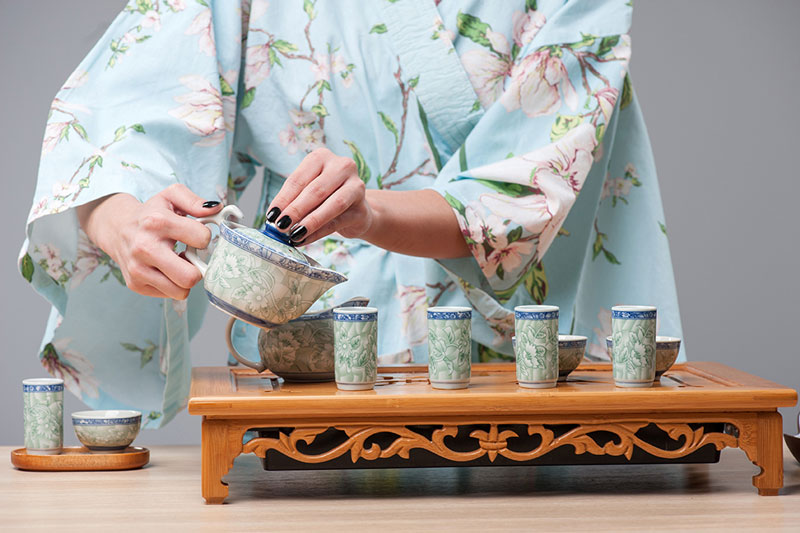

MASTER'S BOOK
SADO – JAPANESE TEA CEREMONY
Japanese tea
Matcha is a type of powdered green tea used by the Japanese as an addition to meals and an element of the tea ceremony, known as cha-no-yu. Cha-no-yu means literally “hot water for tea.” Matcha is manufactured unlike the classic teas. It is grown in specially darkened rooms to prevent the contact of the bushes with sunbeams and slow down their growth. The amino acids produced by matcha leaves make it particularly aromatic and sweet. The leaves are collected, dried and turned into the powder used during the tea drinking ceremony.
Tea brewing ceremony
Originally, cha-no-yu was known as chadō or sadō (Japanese for “the way of tea”). Tea reached Japan around the 8th century, during the reign of the Tang dynasty. The tea brewing and drinking ceremonies were initiated in that period but their present shape differs considerably from the original customs. Centuries ago, matcha used to be served in bowls known as tenmoku-chawan. The ceremony took place in rooms full of precious Japanese and Chinese objects and it was lavish. Contemporary tea brewing is less sophisticated but it still draws from the traditions of the past. The ceremony is no longer accompanied by sumptuous parties, now replaced by lighter meetings where snacks are served. More modest decorations, such as chabana and kakemono, have taken the place of works of art and precious objects. Three people have considerably influenced the shape of the modern-day meetings: Shukō Murata, Jōō Takeno and Rikyū Sen.
The ceremony
Usually tranquil and harmonious, the tea brewing ceremony often takes place in the garden (or a room arranged to resemble a garden), in a special tea house. It is governed by strict rules and characterised by an atmosphere of concentration and solemnity. The host welcomes the guests, who look around peacefully and admire the garden. They use the water drawn from a spring to rinse their hands and mouth in order to cleanse both their spirit and their bodies before the ceremony. The entrance to the tea house is known as nijiri-guchi, and the room when tea is drunk is called chashitsu. Walls are decorated with kakemono (a painting with calligraphy), while flower vases (chabana) are placed in a special alcove. Guests are seated on tatami (cushions on the flooer), and the only subject of conversation is tea brewing.
How to brew Japanese tea?
Preparing matcha in home conditions is not difficult, even without professional equipment. All you need is a regular bowl and a device to mix the powdered tea into the water. Using Chasen, a small bamboo broom, and applying the right movements, resembling letter W or M, you can successfully achieve a cream-like consistency of the infusion. Pass the beverage through a sieve to avoid any lumps while pouring the infusion to the water – this will result in a mousse typical of matcha.
Ceremony for spirit and body
Japanese tea brewing ceremony is a process deeply rooted in the country’s tradition. It purifies not only your body but also your mind, bringing tranquillity to the soul and harmony to the lives of the drinkers.























